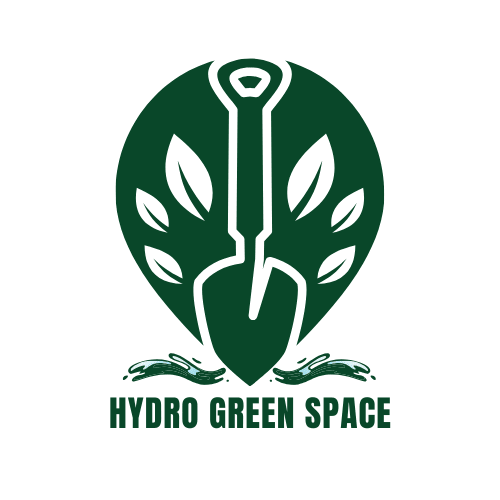Take the Guesswork Out of Nutrients: Your General Hydroponics PPM Chart Explained
After years of honing my hydroponics skills, I thought I knew everything about nutrient management. My herb garden was thriving and I was harvesting bountiful tomatoes each week.
But then I noticed some yellowing leaves on my basil. Soon my cilantro and lettuce also looked stunted.
“What’s going on?” I wondered.
All the conditions seemed perfect in my indoor hydro setup.
That’s when my friend Gina asked, “Have you been tracking your ppm?” Ppm? My nemesis from the early days of hydroponic experiments went wrong.
Gina explained the importance of monitoring ppm levels over time, instead of relying on the same nutrient solution indefinitely. It was time to revisit the general hydroponics ppm chart that I hadn’t glanced at in years.
With Gina’s guidance, I was reminded just how critical those ppm numbers are, especially for experienced growers looking to keep a thriving, productive garden.
While ppm management comes naturally to me now, I remember how confusing all the metrics were as a beginner. So this guide will break down the essence of ppm in simple terms. I’ll share tips on how to use General Hydroponics’ trusted charts to get the most out of your indoor garden.
Whether you’re a plant parent with an established hydroponics system or looking to upgrade your operation, let’s explore ppm together.

What is PPM and Why Does it Matter?
PPM stands for parts per million, which is a measurement of the dissolved solids in a liquid solution. In the context of hydroponics, ppm refers specifically to the mineral nutrients that plants need to grow which are dissolved in the water solution.
The ppm level represents the concentration of these nutrient elements that your plants can absorb. For hydroponics gardening, an optimal ppm range provides a balanced diet for your plants to thrive. If the ppm is too low, plants become nutrient deficient. If the ppm is too high, you risk nutrient burn.
PPM is closely related to EC (electrical conductivity) and TDS (total dissolved solids). Essentially, EC tells you how well the solution conducts electricity based on the presence of dissolved ions. TDS is the total amount of nutrients and salts dissolved in the water. And ppm indicates the concentration of just the plant nutrients within the TDS.
While it may sound complex, monitoring ppm is one of the best ways to understand what your plants are actually receiving. The numbers take out the guesswork, allowing you to create an ideal nutrient profile tailored to each plant’s needs.
How to Use the General Hydroponics PPM Chart
General Hydroponics’ ppm chart is based on rigorous testing and designed to make it easy for hydro gardeners to create optimized nutrient solutions tailored to their plants’ needs. Here is a step-by-step guide to using it effectively:
Choose Your Nutrient Line
General Hydroponics offers ppm guidance for three main formulations:
- FloraSeries – This is their flagship nutrient line, offering a time-tested formula for hydroponics success. It contains three bottles – FloraGro, FloraMicro and FloraBloom.
- FloraNova – An all-in-one formula combining macro and micronutrients into one bottle for simplicity.
- MaxiGro – Targeted for the vegetation growth phase only.
Decide which nutrient line fits your gardening approach. The ppm values differ slightly between formulas.
Identify the Growth Phase
Plants have different nutritional needs in each growth phase:
- Seedling – From germination to 2 weeks old. Needs lower ppm for healthy roots.
- Vegetation – From 2 weeks to just before flowering/fruiting. Rapid green growth requires higher ppm.
- Transition – In the period between veg and bloom, ppm is increased to prepare for flowering.
- Bloom – From the appearance of flower buds until harvest. Additional phosphorus and potassium are needed.
Choose Your PPM Range
The chart provides low, medium, and high ppm amounts for each phase. This allows flexibility based on factors like:
- Plant variety – Leafy greens on the lower end, fruiting plants need more
- Climate – Warmer temps increase nutrient absorption so lower ppm
- System type – Make adjustments for rafts, NFT channels, aeroponics, etc.
Use the values as a starting point and tweak as needed.
Mix Your Nutrients
Consult the product labels for mixing ratios. Aim for the middle ppm range and test the EC. Adjust nutrient amounts gradually to achieve your target.
Track PPM Over Time
As plants grow and drink in more nutrients, ppm will drop so top up your reservoir to maintain optimal levels. Watch for fluctuations and patterns.
Assess Plant Health
Using the ppm chart as a diagnostic tool, notice signs of too much/too little nutrients. Troubleshoot issues and fine-tune your levels.
With each growth cycle, you will get better at balancing the art and science of ppm management. The General Hydroponics chart lays the foundation for nourishing happy hydro gardens.
Optimizing PPM Levels for Your Hydro Garden
While General Hydroponics’ chart provides recommended ppm ranges, you’ll need to dial in the ideal levels for your specific plants and conditions. Here are some tips:
Ideal PPM for Common Plants:
- Leafy greens like lettuce and spinach – 400-800 ppm
- Herbs such as basil, mint, oregano – 800-1200 ppm
- Vegetables including tomatoes, cucumbers, peppers – 1000-1400 ppm
- Fruits like strawberries, melons, citrus – 1200-1600 ppm
- Flowers such as roses, lilies, orchids – 1000-1400 ppm
Adjusting PPM Based on Plant Age:
- Seedlings: Start at 100-250 ppm for the first 1-2 weeks after germination
- Slowly increase ppm by 50-100 points per week up to the recommended vegetation range
- Mature plants can handle higher concentrations approaching the maximum ranges
Modifying for Environment:
- In warmer climates, aim for lower ppm since absorption increases
- If fluctuating between hot days and cool nights, use averages
- For indoor gardens, monitor humidity and ventilation which impact ppm needs
Identifying Signs of Too High or Low PPM:
Too High:
- Tip burn
- Leaf curling or discoloration
- Stunted growth
- Root issues
Too Low:
- Slow growth
- Yellowing leaves
- Weak stems
- Deficiencies manifesting
Maintaining PPM Levels Over Time:
- Record ppm along with pH when mixing nutrient solutions
- Test ppm every few days, especially in small reservoirs
- Top up nutrients and water to keep ppm stable
- Change the reservoir completely every 1-2 weeks
Fine-tuning your ppm range takes time but optimizing levels leads to healthier, more prolific gardens.
FAQ About PPM
Q: Do I need to monitor ppm for hydroponics?
A: Yes, tracking ppm is highly recommended for hydroponics success. It allows you to dial in optimal nutrient levels and catch any imbalances early.
Q: How often should I check ppm?
A: Test your reservoir’s ppm every 2-3 days. More frequent testing is needed for smaller reservoirs or faster growing plants.
Q: Is higher ppm always better for plant growth?
A: Not necessarily. Too high ppm risks nutrient burn. Start low and increase gradually as needed for healthier plants.
Q: My ppm dropped rapidly – what does this mean?
A: Quick ppm drops usually indicate your plants are drinking nutrients rapidly as they grow. Top up your reservoir to maintain the target range.
Q: Is there a universal ideal ppm I should aim for?
A: There’s no single perfect ppm. It depends on plant variety, growth stage, climate, and other factors. Dial it in for your conditions.
Q: Can I reuse my nutrient solution without adjusting ppm?
A: Not usually. Old solutions without ppm adjustments can lead to salt buildups and imbalance. Start fresh regularly.
Q: My plants show deficiency signs but the ppm is high – why?
A: This can mean there is a specific nutrient ratio issue. Review macronutrient vs. micronutrient balance and tweak as needed.
By monitoring and optimizing ppm, you gain immense control over your plants’ nutrition intake. Keep testing and recording ppm to get a green thumb for numbers.
Additional Resources for Mastering PPM
Want to take your ppm skills to the next level? Here are some recommended tools and resources:
Essential Equipment:
- PPM meter – Critical for testing your nutrient solution. Look for reliable, accurate models with automatic temperature compensation.
- EC meter – Measures electrical conductivity to complement ppm data. Combination EC/ppm meters are convenient.
- TDS meter – Total dissolved solids measurement reflects overall ions present. Another useful metric to track.
- pH meter – Monitor pH along with ppm for complete nutrient optimization.
Helpful Reading:
- General Hydroponics Feedcharts – Detailed ppm guidance for all growth phases of common plants. Downloadable PDF charts are available.
- Hydroponic Nutrient Management by Dr. Lynette Morgan – An in-depth book exploring ppm, EC, and pH for expert-level control.
- Maximum Yield’s Nutrient Guide – Reference for how macronutrients and micronutrients influence ppm levels.
Online Forums:
- Hydroponics Subreddit – Ask questions and get feedback from an active community of hydroponic gardeners.
- The Hydroponics Boards – Helpful discussions about ppm troubleshooting, meters, and managing fluctuations.
- Epic Gardening Forums – Talk shop about all aspects of hydroponics including advanced ppm strategies.
Armed with the right knowledge and tools, you’ll gain the confidence and expertise to master nutrient management through ppm. Reach out in the forums if you ever need troubleshooting help!
If you feel like your head is spinning with all these PPM numbers and charts, you’re not alone! When I first started with hydroponics, PPM seemed incredibly complex and confusing.
But over time, tracking PPM became second nature. It gave me the power to create custom nutrient solutions tailored perfectly to my plants’ needs.
The key is to start simple – follow the General Hydroponics guidelines for your growth phases and plants. Monitor your reservoir and watch for deficiencies or burn signs. Make small adjustments and note the differences in your plants.
It may take a few grow cycles to really dial in your optimal PPM ranges. But with practice, you’ll learn how to leverage PPM for healthier, more productive gardens.
The numbers and metrics ultimately translate into real results – bigger blooms, faster fruiting, and abundant harvests. Don’t let PPM intimidate you. Embrace the data and let it guide you to hydroponics success!
If any part of this process ever seems confusing, don’t hesitate to reach out to me. I am always happy to help a fellow hydroponics gardener unlock the secrets to thriving plants.
